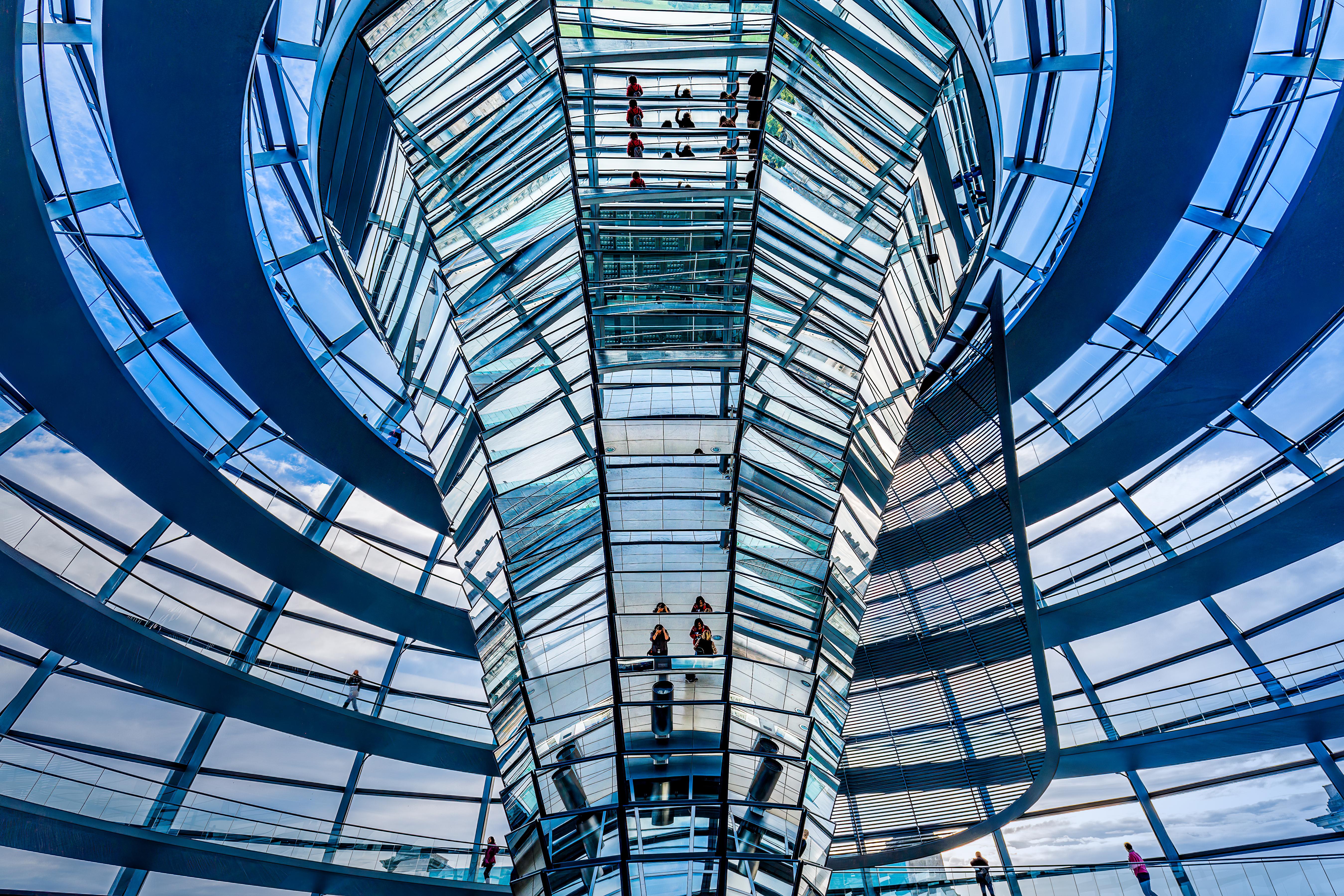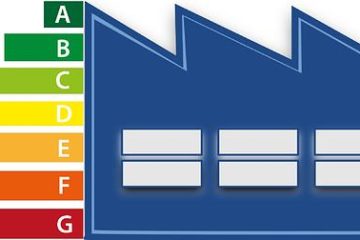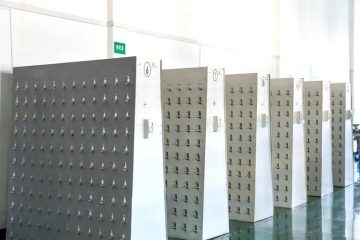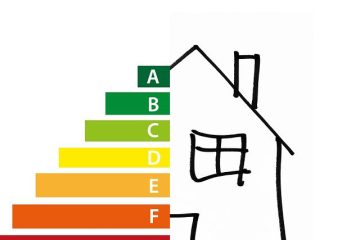In a world where sustainable practices are becoming increasingly crucial, the concept of energy efficiency stands at the forefront of creating a greener future. Among the various certifications and standards available, LEED (Leadership in Energy and Environmental Design) stands out as a beacon of environmental responsibility. Exploring the realm of energy efficiency through the lens of LEED unveils a world where innovation, preservation, and efficiency converge to shape a more sustainable tomorrow. Join us on a journey through the realm of energy efficiency with LEED as our guiding light. Let’s delve into the transformative power of sustainable building practices and the significant impact they have on our environment and communities.
Table of Contents
- Understanding the Importance of Energy Efficiency in LEED Certification
- Key Strategies for Improving Energy Efficiency in LEED Projects
- Innovative Technologies for Enhancing Energy Efficiency in LEED Buildings
- Practical Tips for Sustainable Energy Management in LEED-Certified Structures
- Maximizing Energy Efficiency Benefits through LEED Compliance
- Q&A
- In Summary


Understanding the Importance of Energy Efficiency in LEED Certification
Energy efficiency plays a pivotal role in achieving LEED certification, showcasing a commitment to sustainable practices and environmental stewardship. By prioritizing energy-efficient design and systems, buildings not only reduce their environmental impact but also lower operational costs over time. This focus on efficiency aligns with the core principles of LEED certification, emphasizing a holistic approach to sustainable building practices.
Implementing energy-saving measures such as efficient lighting, HVAC systems, and insulation can significantly lower a building’s energy consumption. Utilizing renewable energy sources like solar panels and geothermal systems further enhances a structure’s energy efficiency profile. Incorporating smart technologies and building automation systems can optimize energy usage, ensuring that resources are utilized effectively while maintaining optimal comfort levels for occupants. Embracing energy efficiency is not only beneficial for the environment but also for long-term cost savings and overall building performance.
Key Strategies for Improving Energy Efficiency in LEED Projects
When aiming to boost energy efficiency within LEED projects, a multifaceted approach is key. Implementing sustainable practices and innovative technologies can significantly enhance a building’s performance while reducing environmental impact. One effective strategy is to focus on optimizing HVAC systems by ensuring proper installation, regular maintenance, and advanced controls to maximize energy savings.
Additionally, integrating renewable energy sources, such as solar panels or wind turbines, can further enhance the overall sustainability of a LEED project. By harnessing natural resources, properties can generate clean energy on-site, reducing reliance on traditional power sources and lowering carbon emissions. Embracing green building materials and efficient lighting solutions can also play a crucial role in creating energy-efficient spaces that are both environmentally friendly and cost-effective in the long run.
<table class="wp-block-table">
<tr>
<th>Strategy</th>
<th>Benefit</th>
</tr>
<tr>
<td>Optimizing HVAC systems</td>
<td>Maximizes energy savings and performance</td>
</tr>
<tr>
<td>Integrating renewable energy sources</td>
<td>Reduces carbon footprint and reliance on traditional power</td>
</tr>
</table>
```<br/><img class="kimage_class" src="https://gpichub.org/wp-content/uploads/sites/22/2024/10/pexels-photo-25630345.jpeg" alt="Innovative Technologies for Enhancing Energy Efficiency in LEED Buildings"><br/><h2 id="innovative-technologies-for-enhancing-energy-efficiency-in-leed-buildings">Innovative Technologies for Enhancing Energy Efficiency in LEED Buildings</h2>Some of the most cutting-edge technologies are revolutionizing how energy efficiency is achieved in LEED buildings. From smart sensors that optimize lighting and HVAC systems to advanced building materials that improve insulation, these innovations are reshaping the way sustainable structures operate.
**Key technologies for enhancing energy efficiency in LEED buildings include:**
- Light Harvesting Systems: Harnessing natural light to reduce the need for artificial lighting.
- Smart Thermostats: Regulating temperatures based on occupancy and usage patterns.
- Renewable Energy Sources: Integrating solar panels and wind turbines to generate clean power onsite.
- Building Automation Systems: Streamlining operations and minimizing energy waste through centralized control.
- High-Efficiency HVAC Systems: Ensuring effective climate control while reducing energy consumption.
These technologies not only contribute to significant energy savings but also enhance the overall environmental performance of LEED-certified buildings. By incorporating these innovative solutions, sustainable structures can achieve higher levels of efficiency and comfort while reducing their carbon footprint.<br/><img class="kimage_class" src="https://gpichub.org/wp-content/uploads/sites/22/2024/10/1-s2.0-S2213138823003703-ga1.jpg" alt="Practical Tips for Sustainable Energy Management in LEED-Certified Structures"><br/><h2 id="practical-tips-for-sustainable-energy-management-in-leed-certified-structures">Practical Tips for Sustainable Energy Management in LEED-Certified Structures</h2><div>
<p>When it comes to sustainable energy management in LEED-certified structures, focusing on energy efficiency is crucial. Implementing practical tips to optimize energy consumption not only reduces environmental impact but also enhances cost savings for building owners.</p>
<p>One effective way to improve energy efficiency is by conducting regular energy audits to identify areas of improvement. Upgrading to **energy-efficient lighting** systems and utilizing smart **thermostats** can significantly reduce energy wastage. Additionally, **sealing windows and doors** to prevent air leaks and incorporating **renewable energy sources** such as solar panels can further enhance the building's overall energy performance.</p>
</div><br/><img class="kimage_class" src="https://gpichub.org/wp-content/uploads/sites/22/2024/10/54044778317_31fc284460_o.jpg" alt="Maximizing Energy Efficiency Benefits through LEED Compliance"><br/><h2 id="maximizing-energy-efficiency-benefits-through-leed-compliance">Maximizing Energy Efficiency Benefits through LEED Compliance</h2>When striving for energy efficiency in building design, achieving LEED compliance stands as a pivotal milestone. By aligning with LEED standards, structures can unlock a multitude of benefits that not only reduce environmental impact but also enhance overall performance and cost-effectiveness. Through meticulous planning and implementation, the holistic approach of LEED certification catalyzes sustainable practices that propel buildings towards a greener future.
Embracing the principles of LEED not only fosters a lower carbon footprint but also cultivates a healthier indoor environment conducive to occupant well-being. From optimizing water and energy usage to promoting the use of eco-friendly materials, LEED compliance sets the stage for a comprehensive transformation in the realm of building design. By embracing innovative technologies and sustainable strategies, structures can transcend conventional norms and establish a new standard of excellence in energy efficiency. <h2 id="qa">Q&A</h2>**Q&A: Exploring the Benefits of Energy Efficiency and LEED Certification**
**Q: What is the significance of energy efficiency in buildings?**
A: Energy efficiency in buildings is essential for reducing energy consumption, lowering utility costs, and minimizing environmental impact. By optimizing energy usage, buildings can operate more sustainably and efficiently.
**Q: What does LEED stand for, and how does it relate to energy efficiency?**
A: LEED stands for Leadership in Energy and Environmental Design. It is a green building certification program that recognizes buildings designed and constructed for improved energy performance and environmental sustainability.
**Q: How can achieving LEED certification benefit building owners and occupants?**
A: Achieving LEED certification can lead to lower operating costs, increased property value, improved indoor air quality, and enhanced overall occupant comfort and well-being. It also demonstrates a commitment to sustainability and environmental responsibility.
**Q: What are some strategies to enhance energy efficiency in buildings and achieve LEED certification?**
A: Implementing energy-efficient lighting, HVAC systems, insulation, and renewable energy sources are key strategies to enhance energy efficiency in buildings. Additionally, incorporating smart technologies and sustainable design principles can help meet LEED requirements.
**Q: How can professionals in the construction and design industry contribute to promoting energy efficiency and achieving LEED certification?**
A: Professionals in the construction and design industry can stay updated on the latest energy-efficient technologies, sustainable building practices, and LEED requirements. Collaborating with experts, conducting energy audits, and utilizing innovative design solutions are crucial steps in promoting energy efficiency and obtaining LEED certification.
**Q: What role do government incentives and regulations play in encouraging energy efficiency and LEED certification?**
A: Government incentives, such as tax credits and grants, can incentivize building owners and developers to invest in energy-efficient upgrades and pursue LEED certification. Furthermore, regulations and building codes aimed at promoting sustainability help drive the adoption of energy-efficient practices in the construction industry.
**Q: In what ways can individuals contribute to energy efficiency and support the adoption of LEED practices?**
A: Individuals can support energy efficiency and LEED practices by reducing energy consumption at home, advocating for sustainable building practices in their communities, and choosing LEED-certified buildings for living or working. Small actions, when combined, can make a significant impact on energy conservation and environmental sustainability. <h2 id="outro">In Summary</h2>In conclusion, embracing energy efficiency through LEED practices not only benefits the environment but also positively impacts our daily lives. By prioritizing sustainable solutions, we pave the way for a brighter, greener future. Let's continue to strive for energy efficiency and LEED standards as we walk towards a more sustainable tomorrow, where every little effort counts towards a world that thrives in harmony with nature. Thank you for joining us on this enlightening journey towards a more energy-efficient and sustainable future.



0 Comments